The No. 1 Sign There’s a Snake in Your Attic
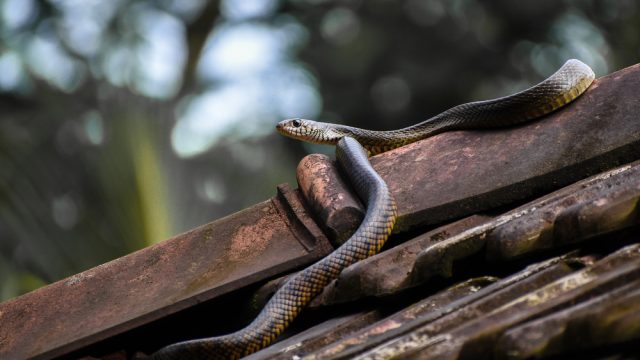
Depending on the kind of homeowner you are, your attic can be where you store everything from family keepsakes and holiday decorations to seasonal clothing and unused furniture. But just like any other relatively quiet room in your house, it’s also common for animals that make their way in from outside to get comfortable in there. And while rodents or bats may seem like the most obvious culprits, experts warn that it’s still very much possible for a snake to find its way into your attic as well. Read on to find out how you can tell if a reptile is in your upstairs space.
READ THIS NEXT: How a Snake Can Get Into Your Home Through Your Toilet.
Snakes can use surprisingly easy ways to enter your home through your attic.
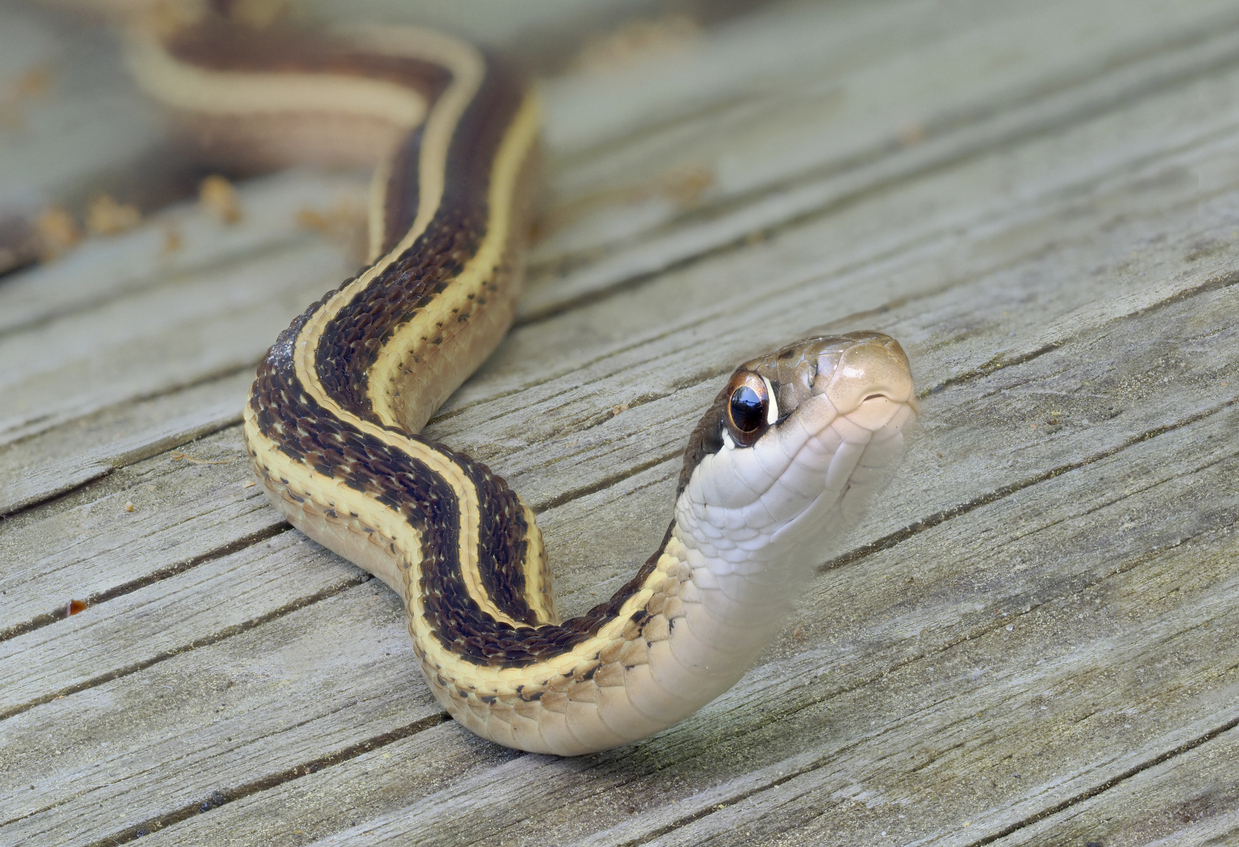
Like any other wild animal, snakes are just as enticed by the warmth and potential food supply that your home can provide. And while entry points like a basement or an open garage might seem like the most likely place to come upon one, experts warn that the reptiles can also wind up in attics. Despite not having legs or arms, some varieties of snakes are actually excellent climbers and can make their way up along brick, woodwork, or trees to access your home’s upper levels, according to experts at Emtec Pest Control.
After finding small holes in venting, windowsills, or eaves, snakes typically set out to hunt once they make their way inside. “Snakes have a fantastic sense of smell, and rodents leave very distinct odors; it’s not difficult for the snake to follow the rat up and into your attic. And once they’re inside, snakes will stay for as long as they can find mice and rats to prey on—which depending on the number of pests in your attic could be months or even years, potentially,” they write.
The first sign there’s a snake in your attic might not be something you see.
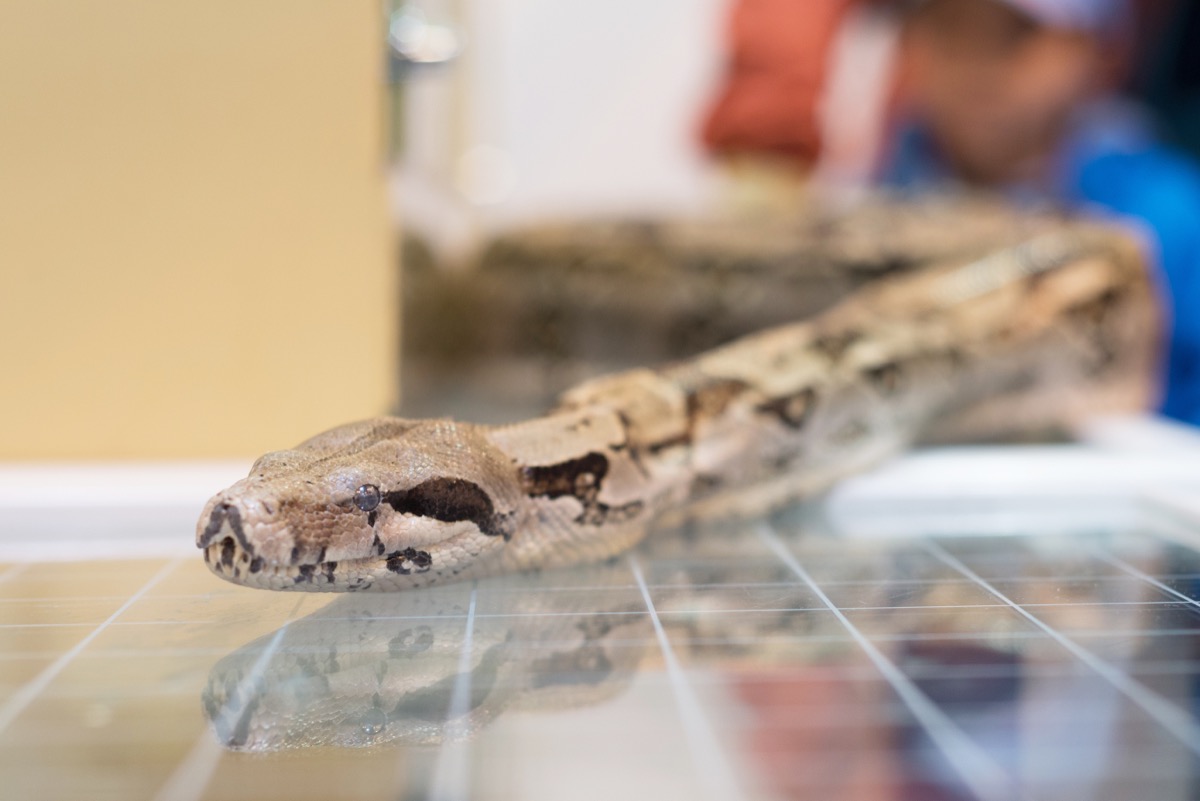
Depending on what you store in your upstairs space or how often you use it, it may be a long time between visits to your attic. But you may not even have to set foot on your top floor to tell that they’re there: According to the experts at Wildlife Removal, it’s not uncommon to hear a slithering sound coming from your ceiling that sounds like a hand slowly running over wood if one has made its way inside. And in some cases, it can even sound scratchy like sandpaper, according to pest control service the Wildlife Company.
“This type of noise is generally made by snakes as they crawl over the paper side of batten type insulation. Their scales will scratch against the paper as they crawl across,” the Wildlife Company says. “This noise will cross a ceiling very slowly if it is made by a snake. If you hear this, crawlspaces and attics need to be inspected.”
RELATED: For more up-to-date information, sign up for our daily newsletter.
Snakes leave behind other telltale signs of their presence you may find.
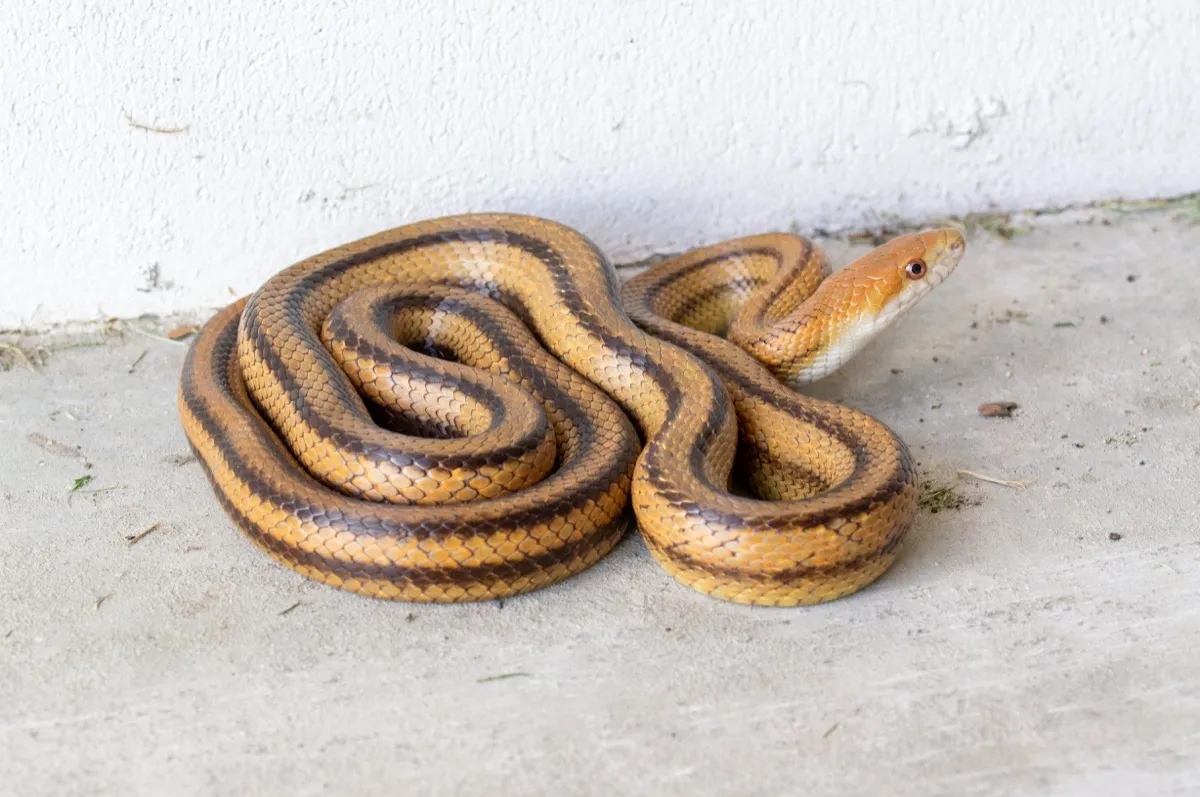
While snakes may be good enough at hiding that you may not lay eyes on them, they can still leave behind other clues that they’re house crashing—and in this case, it’s relatively irrefutable.
“A common sign that you have a snake infestation is finding snakeskin,” Toby Cahoon from B&T Pest Control tells Best Life. “They shed their skin as they grow, so finding old skin around is a good sign that they’re currently living in your [attic].”
And while snakes may not be pests in the traditional sense like rodents are, they still leave behind droppings just as mice and rats do. According to experts at Terminix, they typically look like “thick, pasty, dark-brown smears” with a chalky white tip at one end or can contain traces of prey such as bone fragments and hair.
Experts say there’s an easy way to make sure snakes stay out of your attic.
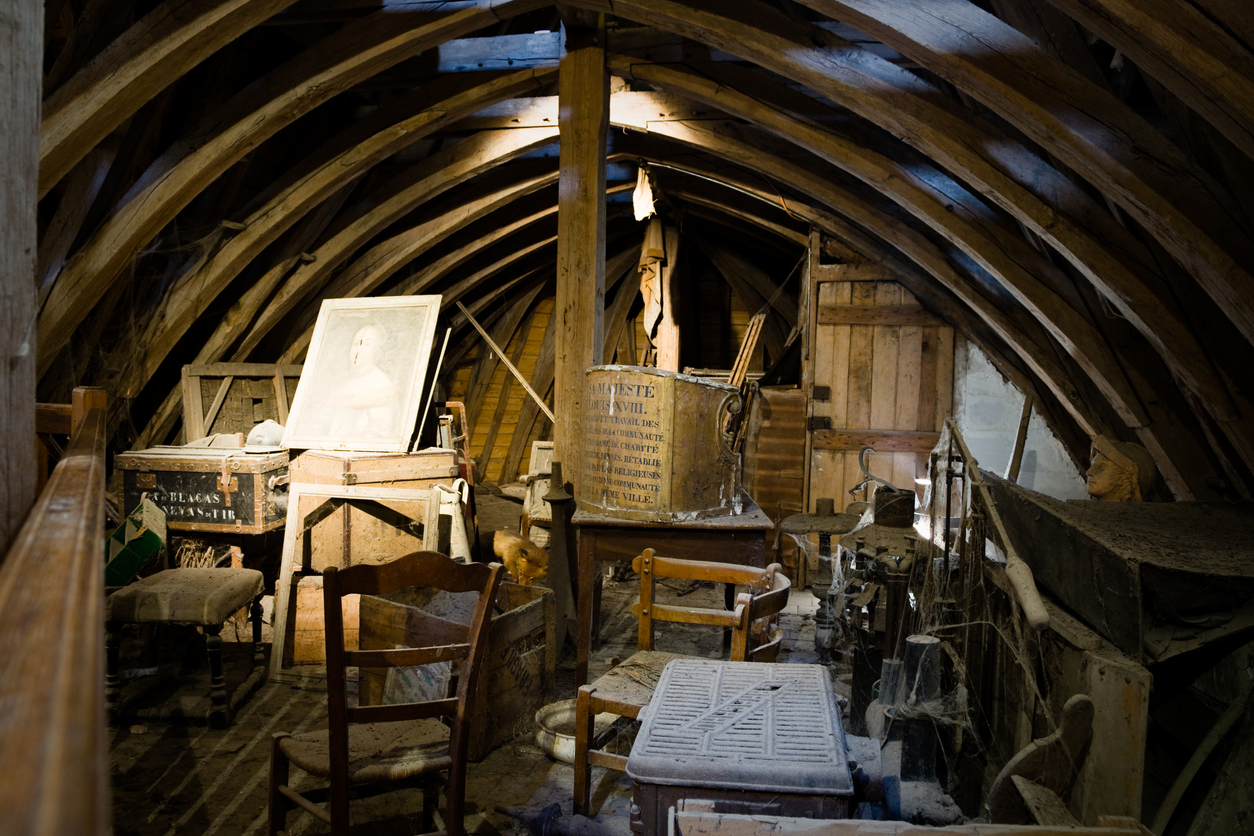
Keeping snakes out of your attic might seem easier said than done. But according to experts, the plan for keeping your upstairs serpent free is relatively straightforward. Namely, this involves patching up any holes you may find and making sure you deny snakes their favorite food source.
“Our best advice: eliminate mice and their scent from the start, and the snakes won’t have any reason to come near your home,” Emtec advises.
If you want to go a step further, you can make your top floor even less inviting to rodents and the snakes that hunt them by reducing clutter and organizing your storage. Using hard plastic storage bins and garment bags can also make it harder for unwanted critters to make themselves comfortable.
READ THIS NEXT: You’re Inviting Snakes to Your Home If You Keep This in Your Yard.